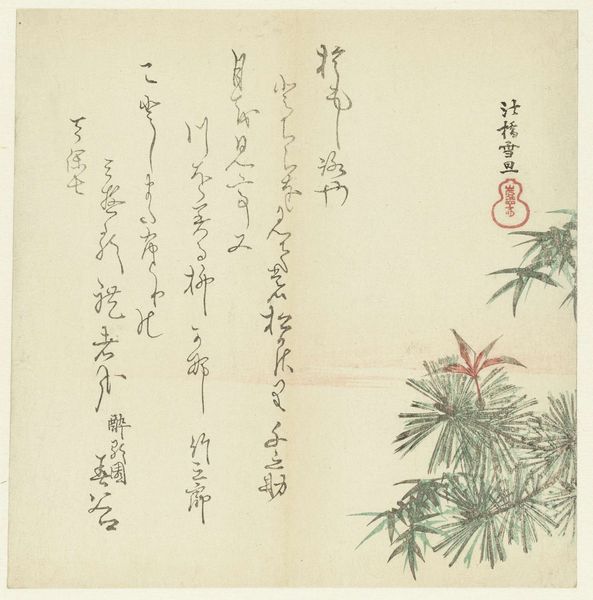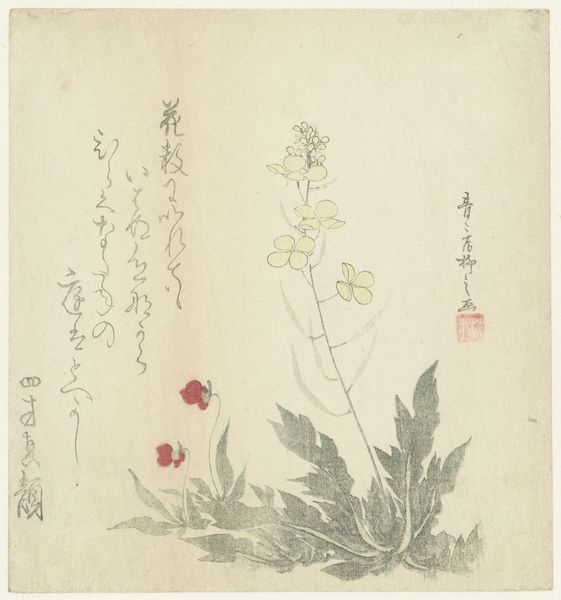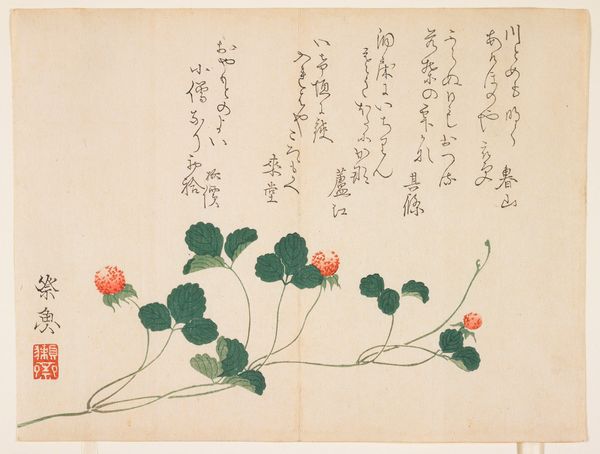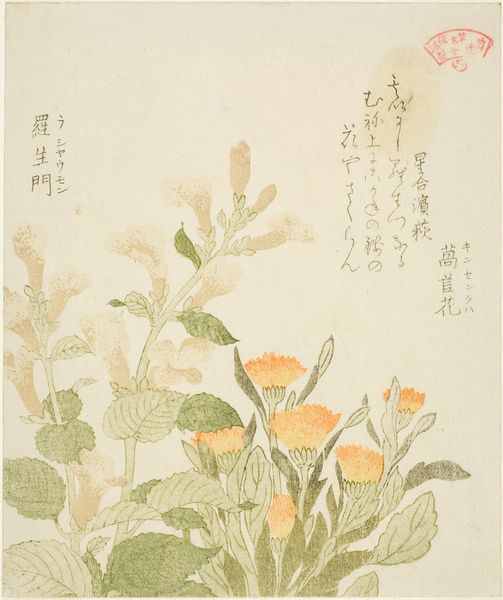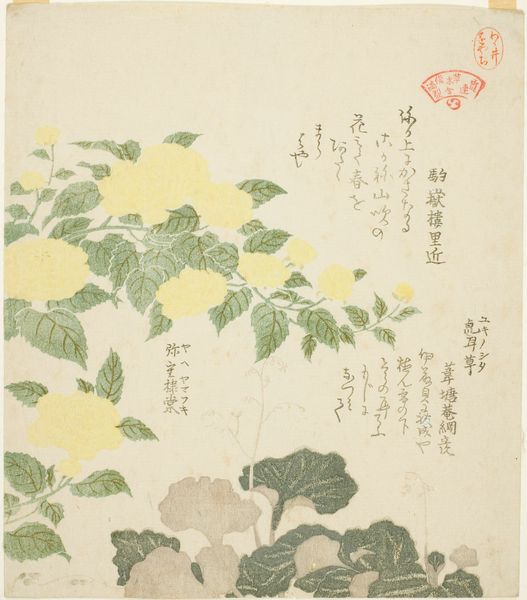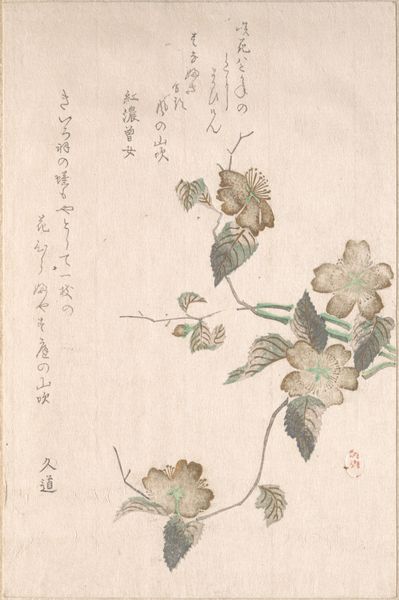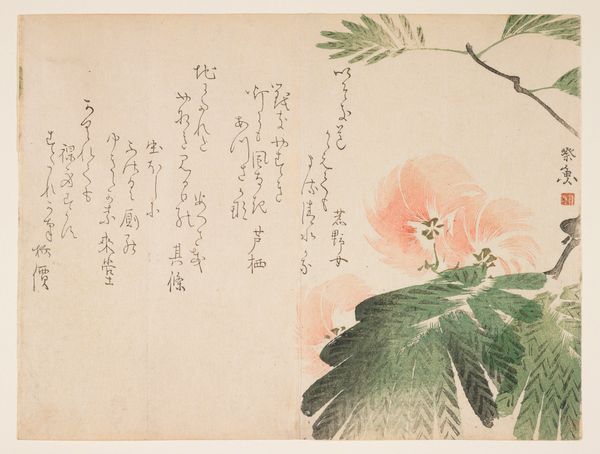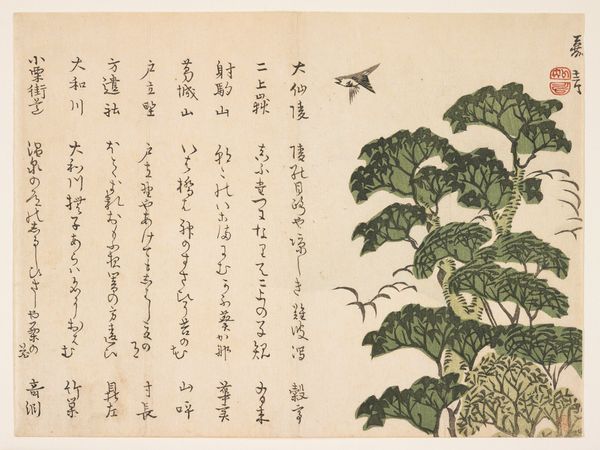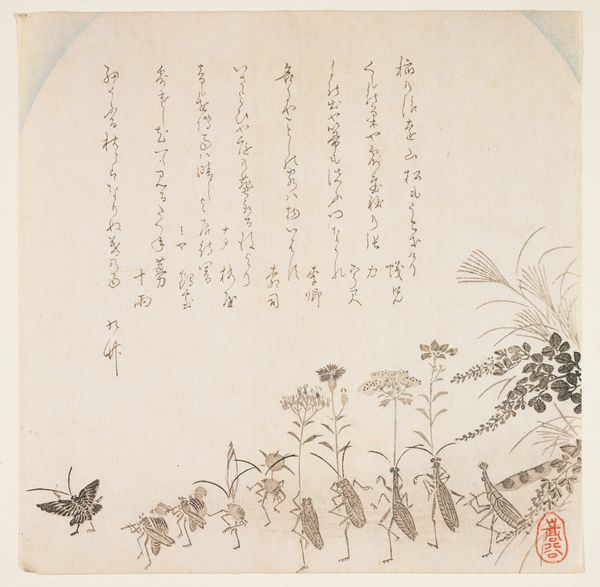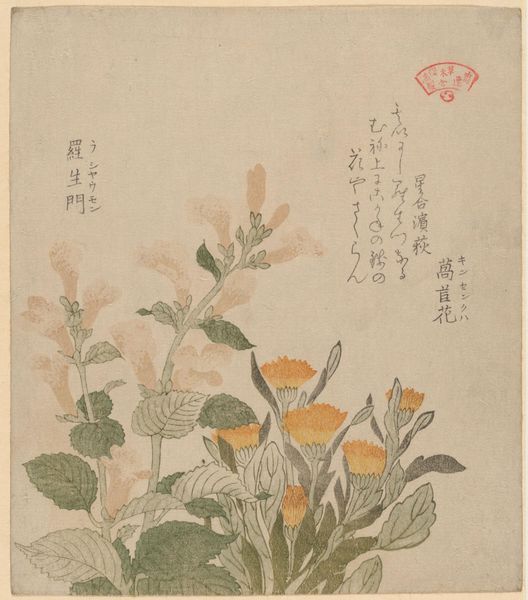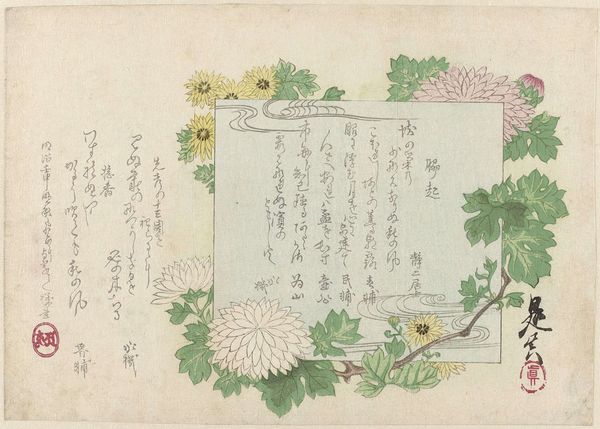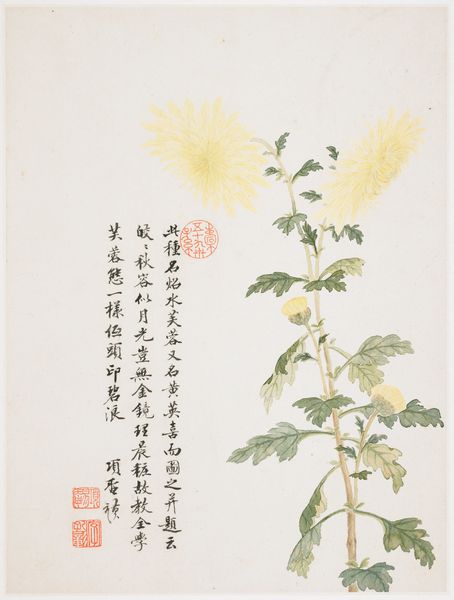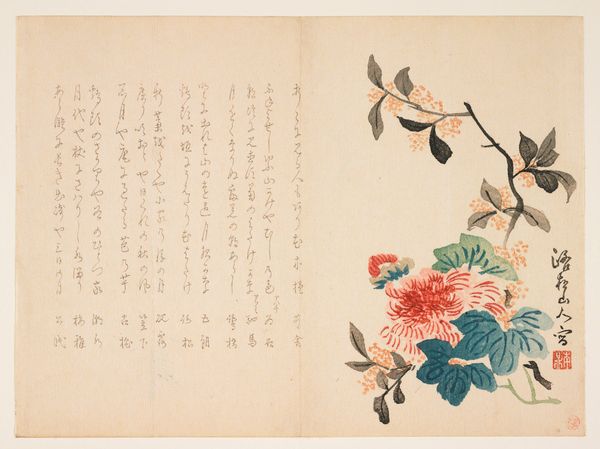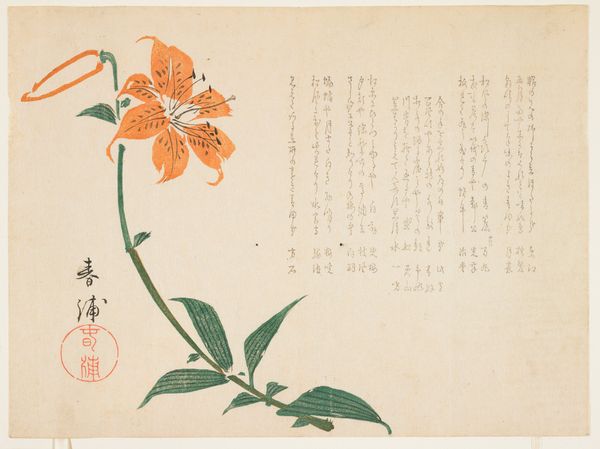
drawing, ink
#
drawing
#
asian-art
#
ukiyo-e
#
ink
Dimensions: height 186 mm, width 188 mm
Copyright: Rijks Museum: Open Domain
Editor: So, this drawing, called "Flowers" by Hasegawa Settan, was made in 1831 using ink. It's so delicate; almost feels like a page torn from a botanist's notebook. What stands out to you when you look at it? Curator: I'm immediately drawn to the visual language, the way these seemingly simple flowers are rendered. Think of the 'floating world,' the ukiyo-e tradition. Even humble flora become potent symbols. Consider the single stem; its upward trajectory speaks to resilience, to aspirations towards enlightenment. Editor: Interesting! I hadn't thought about it in terms of resilience. Curator: Now, look closer. How does the artist balance the organic form of the flowers with the rigid geometry of the calligraphy? Is there tension? Harmony? Editor: I see both! The flowers are light and airy, but then you have the heavy, dark strokes of the calligraphy anchoring the image. Maybe it speaks to the connection between nature and intellect. Curator: Precisely. It's also important to consider the cultural context of presenting flowers in this style; the symbolic role of flowers, or ‘hana,’ were metaphors for ephemeral beauty. How do you see that playing out in this composition? Editor: The delicate nature of the drawing does feel like a visual metaphor for the fleeting nature of beauty and life, I guess. Curator: And those empty spaces around the main elements, known as ‘Ma’, allows the viewer to use their imagination, becoming part of the imagery and giving this little botanical art peace and harmony. Editor: I'll definitely look at ukiyo-e art differently now. It’s much more than just pretty flowers, isn’t it? Curator: Indeed. Symbols whispering across centuries, each stroke laden with meaning.
Comments
No comments
Be the first to comment and join the conversation on the ultimate creative platform.
